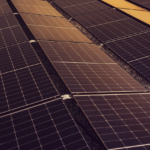
Cannabidiol (CBD) has made waves over the past five years. It’s touted as the non-addictive, medically-useful cousin of the infamous cannabinoid tetrahydrocannabinol AKA Delta 9 THC.
Despite its reputation, you may wonder: what is delta 9, and what does it stand for? And you certainly aren’t alone. Most people don’t know that there’s actually a difference between THC and Delta 9 THC.
What is the difference, and why should you care? We’re telling you all about Delta 9 THC and its incredible benefits next, so you better keep reading.
What Is THC?
Tetrahydrocannabinol (THC) is one of more than 100 cannabinoids found in cannabis. Cannabinoids are the plant’s active compounds, much like caffeine is one of the active compounds in the coffee tree.
Israeli researchers Yechiel Gaoni and Raphael Mechoulam discovered THC in 1964. You may be surprised to learn that THC was actually the second cannabinoid ever discovered. Cannabidiol (CBD) was first identified in 1940.
What you may not know is that THC isn’t the name for a single cannabinoid. It actually refers to a whole family of analogs. Chemical analogs are compounds with the same chemical formula but with a few structural differences.
The THC found in raw cannabis plants is known as THCa, with the “a” standing for acid. It isn’t until heat is applied to cannabis flower that THCa becomes what we generally refer to as THC — an analog called Delta 9 THC. You can also learn about another THC analog, Delta 8 THC, by clicking here.
What Is Delta 9 THC?
Delta 9 THC is the psychoactive cannabinoid cannabis users know and love. It’s the active compound responsible for marijuana’s signature “high.” And it’s also responsible for one of the most well-known side effects of weed: the munchies.
As we mentioned, Delta 9 THC isn’t found in raw cannabis. Through a process called decarboxylation (heating cannabis flower), THCa undergoes a chemical reaction and turns into Delta 9 THC.
THCa is non-psychotoxic, meaning it won’t make you feel high. But once THCa is decarboxylated into Delta 9 THC, the resulting cannabinoid is psychotoxic, meaning it will get you high.
Is Delta 9 THC Legal?
Delta 9 THC is one of three cannabinoids listed on the UN’s drug schedules. In the US, it’s also a Schedule I drug. Schedule I drugs are compounds that have a high potential for addiction and no accepted medical uses.
As a Schedule I drug, Delta 9 THC is federally illegal in the US. However, if you live in one of the 14 states that have legalized cannabis for recreational use, it is legal to possess and ingest THC.
Individuals living in states where cannabis is legal for medical use can also possess and ingest THC. But you must hold a medical card and purchase your THC products from a licensed dispensary.
Delta 9 THC Side Effects
There is currently no known lethal dose of Delta 9 THC. Still, if you use high doses of this cannabinoid, you may experience some side effects, including:
- Dry mouth
- Red eyes
- Light-headedness
- Dizziness
- Paranoia
- Increased heart rate
- Increased appetite
Some people who use Delta 9 THC also report changes in perception. For example, you may experience delusions and hallucinations. You can generally avoid these side effects by consuming THC products in moderation.
It’s also worth noting that Delta 9 THC has the potential for abuse. That means you could become tolerant and, eventually, addicted to the substance. Again, consuming THC in moderation could help reduce the risk of dependency.
Why is Delta 9 THC potentially addictive? And how can the entourage effect play a role in fighting dependency? We’re talking about both of these questions next, so keep reading.
How THC Works in the Body
For a compound to make changes in your body, it has to interact with your cells. Delta 9 THC (THC from here forward) is no different. This cannabinoid and many of its analogs exert their effects via the endocannabinoid system.
THC and the Endocannabinoid System
Humans and many animals have an endocannabinoid system (ECS). This system is made up of a network of receptors and the compounds that interact with those receptors.
ECS receptors are known as CB1 and CB2. These receptors can be found throughout the brain, spinal cord, and rest of the body. In general, though, CB1 receptors are more abundant in the brainm and CB2 receptors are concentrated in the body, especially in immune system cells.
Interestingly, our body has its own natural compounds that interact with these receptors. Scientists call these compounds endocannabinoid. 2-AG and Anandamide are endocannabinoids that work like keys to “unlock” or activate CB1 and CB2 receptors.
So, where do regular cannabinoids like THC come in? THC interacts with both CB1 and CB2 receptors. It has a slight preference for CB1 receptors, which, if you recall, are located mostly in the brain.
THC is what’s known as a partial agonist of CB1 and CB2 receptors. This means it binds to these receptors and “unlocks” them. Though, it activates these receptors less robustly than endocannabinoids 2-AG and Anandamide.
Through this partial agonism of CB1 receptors in the brain and CB2 receptors in immune cells, THC exerts its effects. As you can imagine, other compounds that interact with CB1 and CB2 at the same time as THC can actually change the way THC impacts the ECS. This is called the entourage effect.
THC, CBD, and the Entourage Effect
The entourage effect is a phenomenon that occurs when two different compounds are ingested together. Alone, each compound exerts a specific effect. But, together, they produce an effect that is either different from or greater than the effects of each compound alone.
For example, research shows that THC and CBD present an entourage effect. When used together, CBD may counteract the negative side effects of THC while enhancing its positive aspects.
This is why researchers are looking into CBD as a potential way to mitigate THC’s addictiveness. In fact, a clinical trial is currently in the works to test CBD’s effects on cannabis use disorder. Its Phase II study showed that CBD may decrease biological markers of cannabis use disorder.
How could this be possible? CBD is what’s known as an inverse agonist. Instead of “unlocking” ECS receptors, it has the opposite effect — CBD reduces the activity of CB1 and CB2 receptors when an agonist like THC binds to them.
THC doesn’t just have an entourage effect with CBD. Its effects are also enhanced when in the presence of other cannabinoids and terpenes found in cannabis.
This is why scientists say that whole-plant cannabis products (i.e., full and broad-spectrum products) are more beneficial than, say, a THC extract alone.
The Benefits of THC
So, why should you care about how THC works in your body? THC’s activation of the ECS explains why it impacts you the way it does.
From getting you high to chilling you out, you can thank CB1 and CB2 receptors for the many benefits of THC. Here are some more benefits of THC that you need to know about.
Appetite Stimulation and Nausea Reduction
Despite the implications of categorizing THC as a Schedule I drug, this cannabinoid actually does have some medical uses. Dronabinol is a synthetic (i.e., man-made) THC medication used to treat people with AIDS and some cancer patients.
People with AIDS experience a loss of appetite that leads to severe weight loss or wasting. Patients with cancer who are undergoing chemotherapy suffer from nausea and vomiting. Both of these conditions are treatable with dronabinol.
Pain Relief
THC’s interaction with CB1 receptors in the brain doesn’t just cause you to feel high. It also regulates the sensation of pain.
Pain has two components: the actual tissue damage and the sensation of pain created in the brain. THC does little to impact the actual tissue damage.
Instead, it influences the area of the brain responsible for feeling the sensation of pain. This is why THC is such a promising potential treatment for chronic pain conditions.
Mood Enhancement
Ask anyone who uses cannabis, and they can tell you their favorite THC benefit: euphoria. Euphoria refers to both the high you experience after using weed and the positive effect on your mood.
Most intoxicating drugs like alcohol and nicotine cause euphoria. The interesting difference is that THC doesn’t come along with negative aspects of euphoria like increased aggression.
Sedation
THC can be quite stimulating when you use it in moderate to large quantities. Yet, if you use low doses of THC, it induces relaxation. This is why researchers are looking into THC as a potential sleep aid.
Still, we need more research to determine THC’s exact role in relaxation. Already, some researchers think it’s CBD instead of THC that promotes sedation after cannabis use.
Neuroprotection
Did you know that many cannabinoids have antioxidant properties? Antioxidants are compounds that reduce free radicals. And free radicals can be damaging to cells, leading to cell death, disease, and aging.
This antioxidant activity has implications for neurodegenerative disorders like Alzheimer’s and Parkinson’s. More research is needed to determine if THC can be a treatment for these age-related conditions.
Types of THC Products
By now, we hope you feel educated enough about THC to give it a try. Check out our list of the types of THC products on the market today to help you find the right THC product for your needs.
Cannabis Flower
Cannabis flower is the most unprocessed form of THC you can buy on the market. Flower refers to the fruit of the cannabis plant. This is where the majority of the plant’s cannabinoids are concentrated.
You can smoke or vape cannabis flowers. However, smoking cannabis may expose you to harmful products of combustion. Another option with cannabis flower is to make your own edible oils and butter.
Depending on your needs, you can find cannabis flower strains with different THC levels.
THC Extracts
When manufacturers use chemicals to separate cannabinoids from cannabis, we call it extraction. An extract can be a concentrate, which contains THC plus other cannabinoids and terpenes from the plant. Or it can be an isolate — pure THC in liquid or solid form.
If you want to take advantage of the entourage effect, make sure to choose a full- or broad-spectrum concentrate. Broad-spectrum concentrates tend to filter out all the THC. You can find full-spectrum products with varying levels of THC content.
Don’t care about the entourage effect and just want the most potent product out there? Isolates are your guy.
Like cannabis flower, isolates must be heated to activate the THCa into Delta 9 THC. Many concentrates come in an ingestible form, making them far more convenient for discreet use.
Cannabis Edibles
Edibles are consumable food and drinks infused with THC and other cannabinoids. You can DIY your own edibles or purchase them off the shelf.
And edibles don’t just come in stereotypical brownie-form these days. You can buy cannabinoid-infused gummies, sports drinks, and even cocktails. If you choose to DIY your edibles, the options are even more endless.
A note of warning to new edible users: edibles can be highly potent. Always follow the manufacturer’s directions for safe consumption. And make sure you test your homemade edibles for the proper dosing.
At the same time, edibles’ effects are much more delayed than if you were to smoke or vape THC. This presents the risk of ingesting too much THC. So, always err on the side of caution when trying new edible THC products.
Want More Cannabinoid Education?
So, what is Delta 9 THC? It’s a cannabinoid that comes from the cannabis plant, and it’s what we generally refer to as THC. In addition to getting you high, this cannabinoid has a whole host of benefits you’ve got to try for yourself.
Enjoyed learning about THC and want more educational content just like this? Then you better keep checking back for new articles every day!



